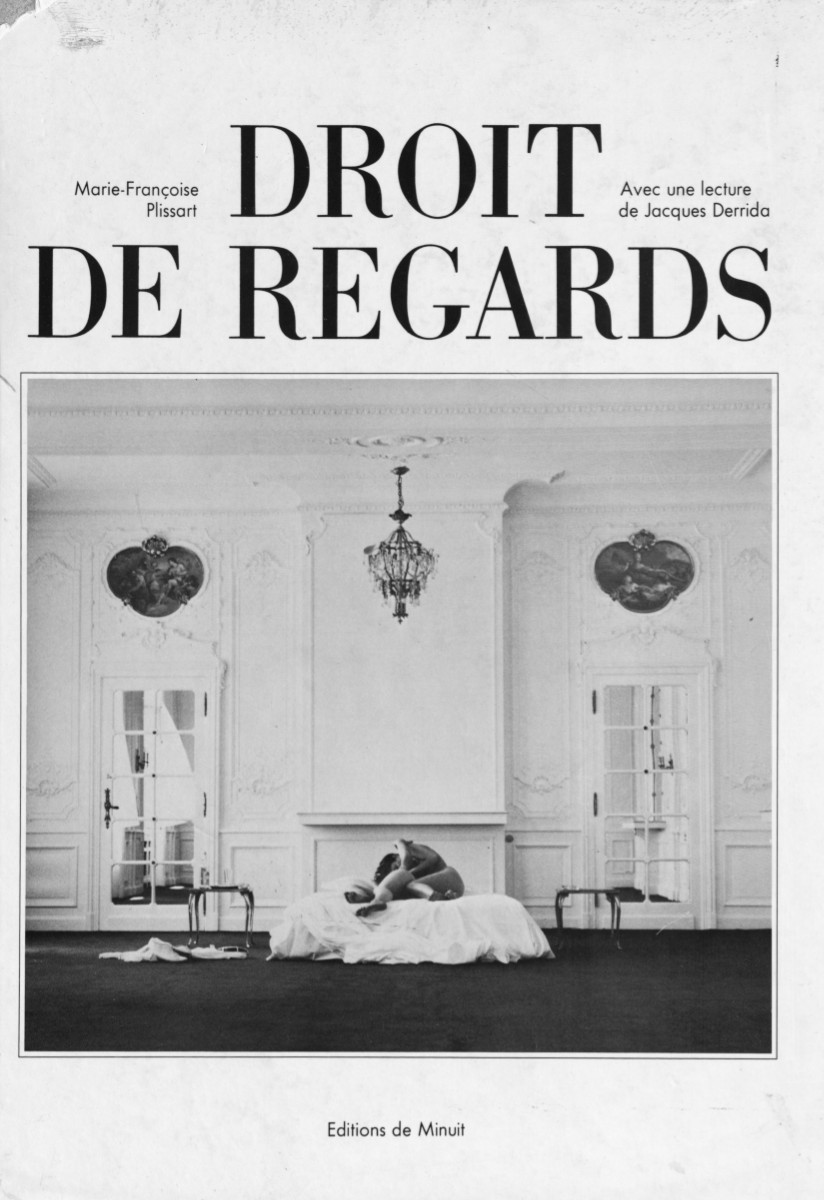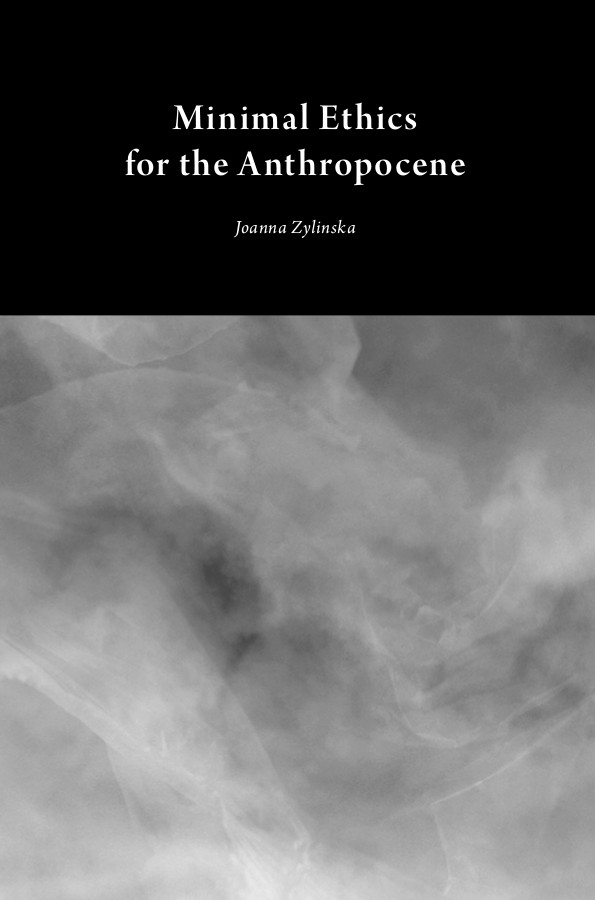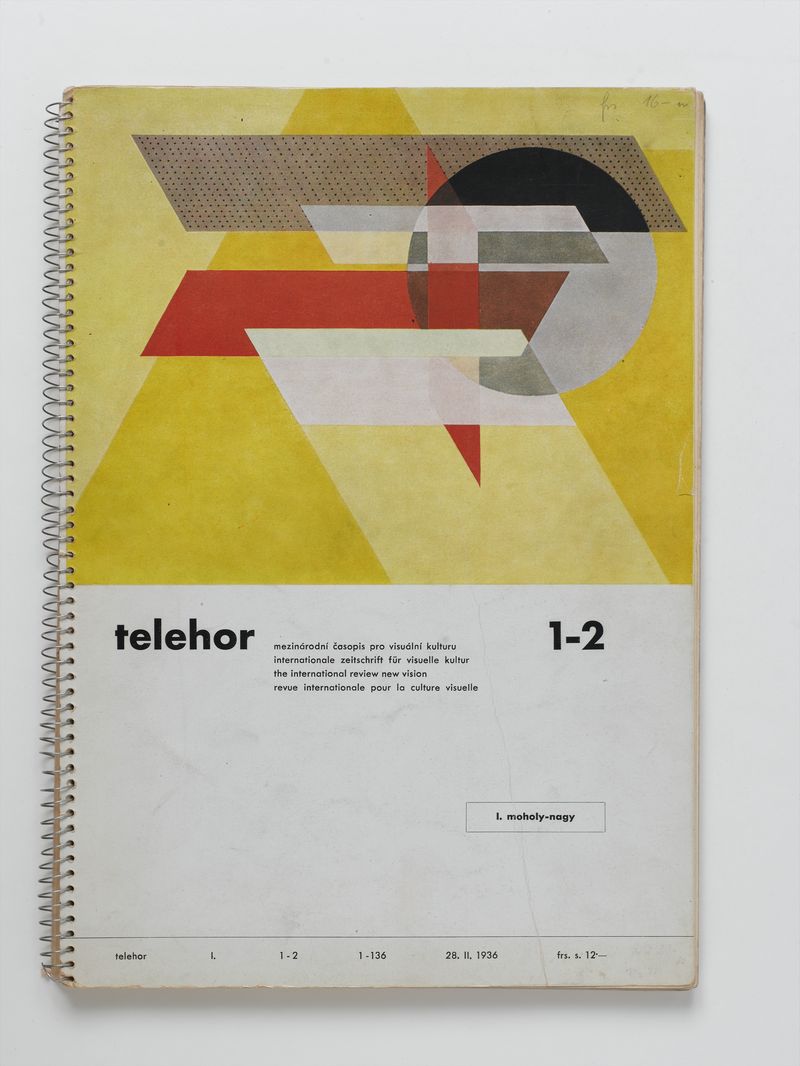Marie-Françoise Plissart, Jacques Derrida: Droit de regards (1985)
Filed under book | Tags: · philosophy, photography

Fin du siècle dernier. Dans des décors princiers, dont les ruines sont devenues des théâtres fragiles, des femmes s”aiment, se poursuivent et se perdent. Dans les parcs, au bout des couloirs et sous les lustres fanés, des scènes troublantes s”entrecroisent. Autant d”énigmes que chaque regard — le vôtre – peut résoudre — ou pas. Droit de regards se lit comme de la poésie: littéralement et dans tous les sens. Le roman-photo est suivi d”une lecture de Jacques Derrida, qui en prolonge les multiples ramifications.
Photography by Marie-Françoise Plissart
Script and montage by Benoît Peeters and Marie-Françoise Plissart
Essay by Jacques Derrida
Publisher Minuit, Paris, 1985
ISBN 2707310190, 9782707310194
99 + 36 pages
via Scripted
Commentary (Alexandra Koeniguer, Textyles, 2011, in French)
PDF (139 MB)
Comment (0)Joanna Zylinska: Minimal Ethics for the Anthropocene (2014)
Filed under book | Tags: · anthropocene, death, ethics, life, photography, poetics, politics

“This book was inspired by Annie Sprinkle and Beth Stephens’ wonderfully provocative wedding to Lake Kallavesi at the ANTI Contemporary Art Festival in Kuopio, Finland, in September 2012.” (from Acknowledgments)
“Minimal Ethics for the Anthropocene considers our human responsibility for the world, at a time when life finds itself under a unique threat. Its goal is to rethink “life” and what we can do with it, in whatever time we have left—as individuals and as a species. This speculative, poetic book also includes a photographic project by the author.” (from the back cover)
Publisher Open Humanities Press, September 2014
Critical Climate Change series
Creative Commons BY-SA 4.0 License
ISBN 1607853299, 9781607853299
152 pages
Reviews: Jason Groves (Feedback, 2014), Marietta Radomska (philoSOPHIA, 2015), Andrew Pilsch (Enculturation, 2017).
HTML
PDF, PDF (updated on 2016-7-19)
Fr. Kalivoda (ed.): Telehor 1-2: Special Issue on L. Moholy-Nagy (1936) [CZ/DE/EN/FR]
Filed under magazine | Tags: · art, avant-garde, colour, design, film, light, photography, vision

Telehor was a project by Czech functionalist architect, theorist and educator, František Kalivoda, who planned it as a 64-page illustrated quarterly dedicated to visual culture. As an editor and publisher, Kalivoda had established an impressive network of collaborators across Europe, however his plans never fully took off.
Its only issue appeared as a book-length publication on the work of artist and Bauhaus teacher László Moholy-Nagy who was at the time already living in London. The magazine has, in the internationalist fashion, sections in several languages, including French, English, Czech, and German.
Contents of the English section: Foreword by Siegfried Giedion, 1935 (pp 27-29), Letter from Moholy-Nagy to Kalivoda, June 1934 (30-32), Moholy-Nagy’s essays “From Pigment to Light”, 1923-26 (32-34), “A New Instrument of Vision”, 1932 (34-36), “Problems of the Modern Film”, 1928-30 (37-40), “Supplementary Remarks on the Sound and Colour Film”, 1935 (41-42), “Once a Chicken, Always a Chicken”, a film script on a motif from Kurt Schwitter’s “Auguste Bolte”, 1925-30 (43-45), Postscript by Kalivoda, 1936 (45-46).
The reproductions run from page 49 through 112.
Publisher Fr. Kalivoda, Brno, 1936
Typography Fr. Kalivoda
Print Typia Press, Brno
138 pages, 69 ills., 29.7 × 21 cm
via Bibliothèque Kandinsky, in the Unlimited Edition
Moholy-Nagy at Monoskop wiki
Kalivoda at Monoskop wiki
PDF, PDF (variant with black cover, 149 MB)
Comment (1)
